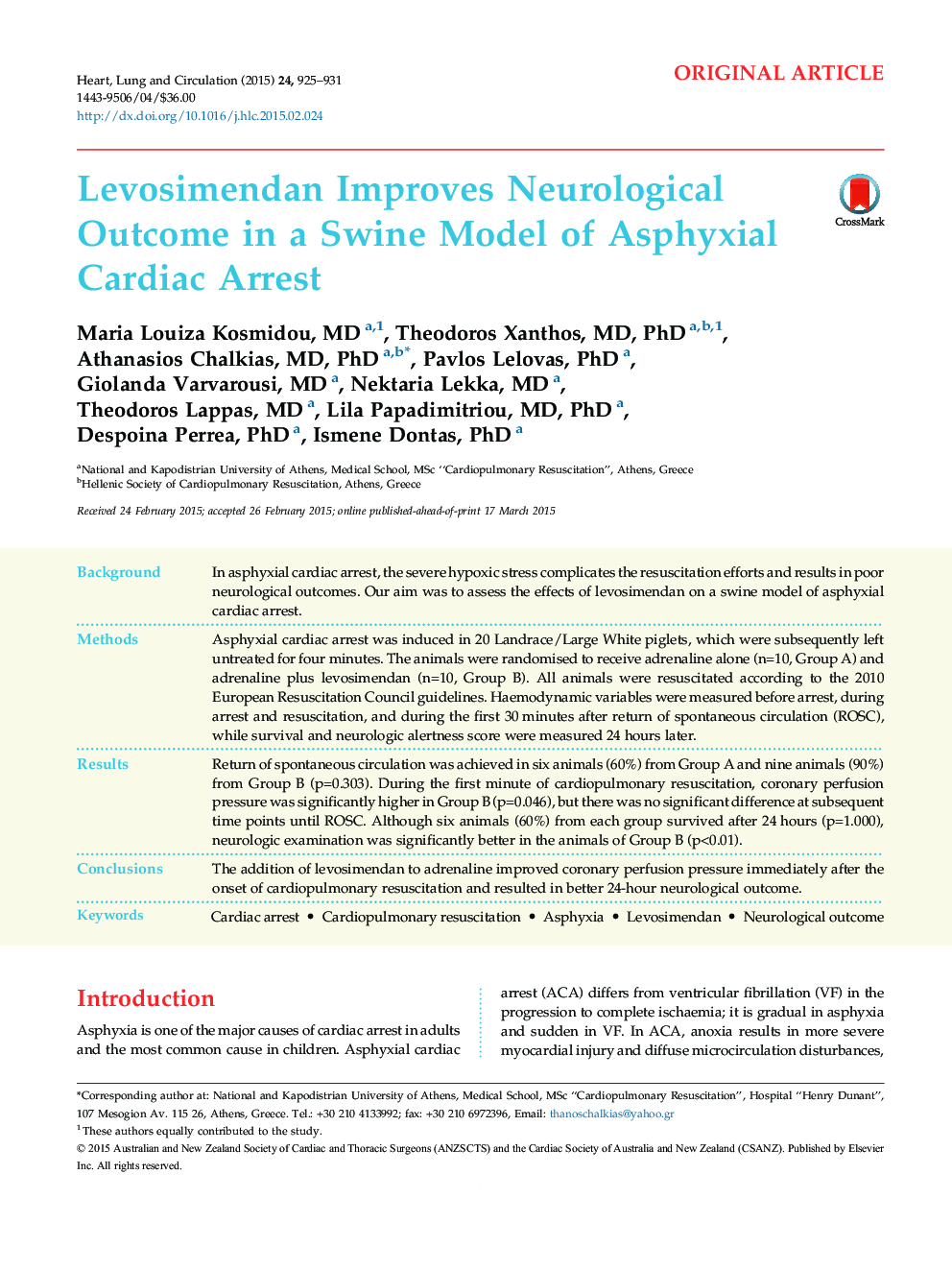| Article ID | Journal | Published Year | Pages | File Type |
|---|---|---|---|---|
| 2917828 | Heart, Lung and Circulation | 2015 | 7 Pages |
BackgroundIn asphyxial cardiac arrest, the severe hypoxic stress complicates the resuscitation efforts and results in poor neurological outcomes. Our aim was to assess the effects of levosimendan on a swine model of asphyxial cardiac arrest.MethodsAsphyxial cardiac arrest was induced in 20 Landrace/Large White piglets, which were subsequently left untreated for four minutes. The animals were randomised to receive adrenaline alone (n=10, Group A) and adrenaline plus levosimendan (n=10, Group B). All animals were resuscitated according to the 2010 European Resuscitation Council guidelines. Haemodynamic variables were measured before arrest, during arrest and resuscitation, and during the first 30 minutes after return of spontaneous circulation (ROSC), while survival and neurologic alertness score were measured 24 hours later.ResultsReturn of spontaneous circulation was achieved in six animals (60%) from Group A and nine animals (90%) from Group B (p=0.303). During the first minute of cardiopulmonary resuscitation, coronary perfusion pressure was significantly higher in Group B (p=0.046), but there was no significant difference at subsequent time points until ROSC. Although six animals (60%) from each group survived after 24 hours (p=1.000), neurologic examination was significantly better in the animals of Group B (p<0.01).ConclusionsThe addition of levosimendan to adrenaline improved coronary perfusion pressure immediately after the onset of cardiopulmonary resuscitation and resulted in better 24-hour neurological outcome.
